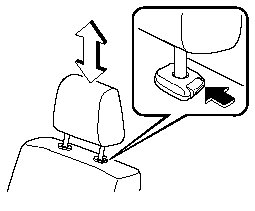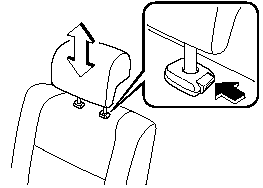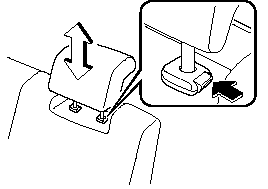Head Restraints
Head restraints are intended to help protect you and the passengers from neck injury.
WARNING.
Always drive with the head restraints
installed when seats are being used
and make sure they are properly
adjusted:
Driving with the head restraints
adjusted too low or removed is
dangerous. With no support behind
your head, your neck could be
seriously injured in a collision.
Height adjustment
To raise a head restraint, pull it up to the desired position.
To lower the head restraint, press the stopcatch release, then push the head restraint down.
Adjust the head restraint so that the top is even with the top of the passenger's ears, never the passenger's neck to prevent injury.

Front seat

Second-Row seat

Third-Row seat
Removal/Installation
To remove the head restraint, pull it up while pressing the stop-catch.
To install the head restraint, press the uprights into the holes while pressing the stop-catch.
WARNING.
Always drive with the head restraints set up when seats are being used and make sure they are properly set up: Driving with the head restraints not set up is dangerous. With no support behind your head, your neck could be seriously injured in a collision.
See also:
Exterior
The outside of the Tribute didn't get as much of a face-lift as did the
Escape. The grille lost its crossbar, and the Mazda logo has moved up, while the
headlights and taillights are new. Fog ligh ...
Changing a Flat Tire
NOTE.
If the following occurs while driving, it could
indicate a flat tire.
- Steering becomes difficult.
- The vehicle begins to vibrate excessively.
- The vehicle pulls in one direction.
If yo ...
Comfort and Ease-of-Use
The cabin of the Mazda MX-5 facelift model offers enhanced comfort. The door
cupholders, for instance, do not protrude into the cabin anymore, which provides
more space to the occupants' legs. The ...


